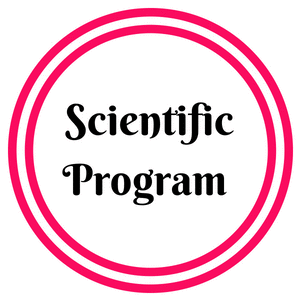MarÃa Ramos Payán
University of Sevilla, Spain
Biography
Dr. María Ramos Payán has completed her PhD from University of Seville, Spain and postdoctoral studies from University of Copenhagen (Denmark), University of North Carolina (USA) and Microelectronic National Center of Barcelona (Spain). She is leader of the microfluidic research line. She has published more than 30 papers in reputed journals and has been serving as an editorial board member of repute.
Abstract
Sample treatment is the most important step previous real sample analysis. This procedure have been developed in order to improve the existing methodologies and offer new advantages. A step forward in this topic has been achieved with the miniaturized LE as Liquid phase microextraction (LPME), where the extraction of the analytes is controlled by passive diffusion [1] and as Electromembrane Extraction (EME) where the extraction procedure is controlled by an electrical field force [2]. Both techniques have been optimized in microfluidic systems, however, compared to traditional LPME and EME, there are other parameters to take into account when miniaturized systems are used. Based on the literature, traditional EME seemed to offer higher extractions efficiencies than traditional LPME when both were carries out using the same set-up. When LPME and EME are miniaturized into microfluidic systems, the geometry and the depth of the channels are critical for the performance. Since any of those techniques use agitation during extraction, the depth of the channel must be carefully optimized in order to get better extraction efficiencies. EME procedures require the use of a platinium electrode in each channel so, consequentely, the depth of the channel must be a bit deeper than the i.d of the electrode. However, LPME channels can be much less deeper since it works under passive diffusion and the distance between the analyte of interest and the SLM decrease. For this reason, in miniaturized systems, an exhaustive study of the channel size must be carried out since the extraction efficiencies are not always higher using EME than LPME, although the first one use an electrical field to accelerate the electromigration.
Image

References
[1] G. Helle, C. Mariet, G. Cote, Micro fluidic Tools for the Liquid-liquid extraction of radionuclides in analytical procedures, Procedia Chem. 7 (2012) 679-684.
[2] M. Rezazadeh, Y. Yamini, S. Seidi, B. Ebrahimpour, Electromembrane surrounded solid phase microextraction: a novel approach for efficient extraction from complicated matrices, J. Chromatogr. A 1280 (2013) 16-22.
Acknowledgements
This work was supported by the Grant Juan de la Cierva-Incorporación (Ministry of Economy, industry and competitiveness), Grant number JCI-2015-26647.
